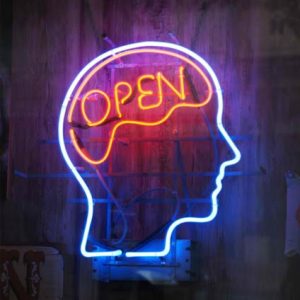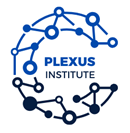Why are family reunions and holiday gatherings so often prone to free-floating angst, irrational episodes and inexplicable outbursts?
Such eruptions may have origins that are utterly obscure or only dimly remembered, but complexity science can help us make sense of them. In his extraordinary book The Developing Mind, How Relationships and the Brain Interact to Shape Who We Are, psychiatrist and scholar Daniel J. Siegel talks about the family not only as a complex system, but as a supersystem, composed of clusters of smaller complex systems made up of the relationships and interactions of individual family members. As if that isn’t intricate enough, consider that our brains, with their billions of neurons and trillions of interconnections, are the most complex systems on earth, and that when one person engages another, their brains work together as another complex system. Clearly, this isn’t linear, and it has little to do with common sense.
 Siegel’s analysis of how we arrive at a “state of mind” is illuminating. He describes state of mind as “the total pattern of activations in the brain at a particular moment in time.” Our brains are designed for energy flow among widely distributed activations of neurons, Siegel explains, and the patterns of activation direct the way information is processed. The circuits that regulate information processing, he writes, “are distributed in a widely interconnected web, with profoundly complex inputs and outputs linking various clusters of cells that carry out particular functions.” This permits what he calls a “cohesive” state of mind, and he says it is cohesion that coordinates brain activity for maximum efficiency and effectiveness of the processes needed a given time. He suggests, for example, that a fearful state of mind is the clustering of related processes into a cohesive whole—heightened caution, hyper-vigilant behavior, past memories of threat, a model of the self as one facing danger, and emotional arousal that tells the mind and body to be braced for harm. The more frequently a particular state of mind has been activated by cohesive clusterings, the more likely it is to be activated in the future.
Siegel’s analysis of how we arrive at a “state of mind” is illuminating. He describes state of mind as “the total pattern of activations in the brain at a particular moment in time.” Our brains are designed for energy flow among widely distributed activations of neurons, Siegel explains, and the patterns of activation direct the way information is processed. The circuits that regulate information processing, he writes, “are distributed in a widely interconnected web, with profoundly complex inputs and outputs linking various clusters of cells that carry out particular functions.” This permits what he calls a “cohesive” state of mind, and he says it is cohesion that coordinates brain activity for maximum efficiency and effectiveness of the processes needed a given time. He suggests, for example, that a fearful state of mind is the clustering of related processes into a cohesive whole—heightened caution, hyper-vigilant behavior, past memories of threat, a model of the self as one facing danger, and emotional arousal that tells the mind and body to be braced for harm. The more frequently a particular state of mind has been activated by cohesive clusterings, the more likely it is to be activated in the future.
Subtle social cues—a tone of voice, a facial expression, a memory, or feelings awakened by a home visit—can spark dramatic shifts in state of mind. Siegal describes how an adult reentering the physical and social environment of youth can be bombarded with experiences that activate old states of mind. A grown man or woman might suddenly and surprisingly feel like a child again, and endure sensations of old adolescent struggles. With their own mental states activated accordingly, parents might treat adult offspring like renegade teenagers. Siblings often experience involuntary reactivation of the states of mind that arose during childhood jealousies and competition. Of course, social clues can also invoke enjoyable mental states. Further, increasing mental complexity, with more varied and flexible emergent patterns, fosters healthy resilience. Getting stuck in old negative patterns is unhealthy and indicates reduced complexity and emotional trouble.
Siegel provides lucid discussions about the workings of self-organization, interconnectedness, and coordination within individual brains and among brains of people who are socially involved with one another. And he reminds us why complexity science us so important to an understanding of brain functions and human behavior. “Complexity theory is a mathematically derived collection of principles governing the behavior of physiochemical systems, such as groups of molecules or patterns of clouds,” he writes. “…How can we equate clouds with the human psyche? Aren’t inanimate objects and life forms fundamentally different? Remember… that biological systems are composed of basic atoms that are not alive. Complexity theory has been applied to an understanding of systems from molecules to societies, with extremely useful and unique applications.”
Take your time with this book, and don’t even think of skimming. Savor it the way you would the irresistible harmonies of a favorite musical composition or adventurous fine cuisine. Siegel probes fascinating mysteries of neurobiology, brain chemistry and brain architecture, as well as the vital importance of early human attachments and their life-long impact. His research and theories have major implications for clinical interventions, and new insights for ordinary people interested in penetrating the complexities of why we humans behave the way we do.
This article was published in May 2007. If you are interested in helping us curate articles, recordings and research from our archives let us know. admin@plexusinstitute.org
